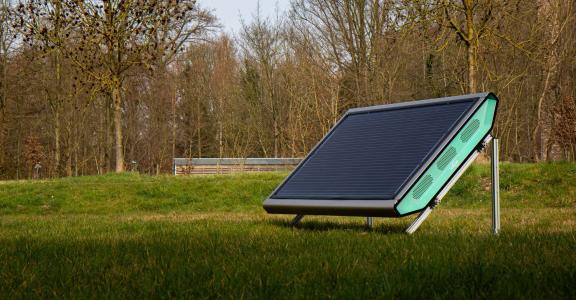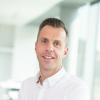Solhyd makes production scalable and future-proof
Solhyd, a KU Leuven spin-off, aims to make green hydrogen accessible to everyone. To this end it has developed a hydrogen panel that uses sunlight to produce hydrogen. With this unique technology, it becomes possible to produce renewable energy from water and air - wherever you want. After intensive research, the time had come to produce a first batch of panels. Solhyd turned to Sirris for help in setting up an optimal scalable production concept and for advice on various production-related matters.
From blank canvas to scalable production concept
Right from the start of the project, Solhyd entered the spin-off phase, which was particularly evident due to the numerous R&D activities. Although the hydrogen panel had gone through several successful tests, there was still a lot of work ahead to industrialise the first prototype. To this end, Solhyd successfully collaborated with Comate Engineering & Design.
In addition to industrialising the product, Solhyd quickly realised that the production needed further planning. The initial panels were manually assembled on a standard worktable, although management soon realised that this approach would not be feasible for future scaling. Together with Sirris, Solhyd started thinking about a suitable production concept that would be scalable for the future.
As a first step, the (manual) assembly process was analysed to gain a better understanding of the different steps, the required time and the complexity involved. This resulted in several improvement proposals focussing on a more efficient and, above all, more uniform production process - with a special emphasis on quality. In addition, this exercise also led to proposals for changes in the product design (design for assembly).
In the next step, an initial production concept was outlined. Solhyd already had a spacious production hall, but there were questions about the best layout. Together with Sirris, the production floor was divided into zones. R&D and production were detached from each other, wet and dry assembly were separated. In addition, workstations were further elaborated – using ergonomic worktables, shadow boards for tools. The flow of components, assemblies and finished products were also planned out. This exercise also considered future scaling up. In this way, additional assembly stations could be integrated when production numbers increase significantly. Solhyd immediately set to work with this analysis and implemented the production concept, step by step.
Digital production follow-up
Although the current number of panels to be assembled is manageable from a planning point of view, Solhyd’s management also realised that a solid foundation was required for the future. Indeed, manual planning, tracking orders and managing stock, whether on paper or through Excel, would quickly become inadequate and could cause problems.
Together with Sirris, Solhyd developed a digital order flow system. This included setting up a future-proof system for numbering parts and considering the composition of the bill of materials (BOM). Solhyd immediately started registering all important production-related information in Excel. They even performed a test with an ERP system to get to know the typical order flow in advance and thus be armed for the future. Currently, Solhyd is actively fine-tuning the digital order flow step by step.
Practical tips & tricks
When initiating production, various practical questions arise. And Solhyd was no exception. Sirris assisted Solhyd in finding answers. Insights were shared, for instance, on documenting the assembly process in work instructions, organising the warehouse and managing stock, packaging options, visual management, recording and tracking improvement suggestions ...
Ready for the future
Solhyd's evolution in recent months has been spectacular. Although there is still R&D to be done to further optimise the product, Solhyd successfully made the shift from prototyping to production. Solhyd's leadership is driven and possesses great technical acumen. And a dedicated team is continuously working to make further improvements. After an initial production run of 10 panels for a pilot project, an additional 6-12 panels followed fairly quickly, for which Solhyd used the experience and knowledge gained from Sirris to increase efficiency and safety.




